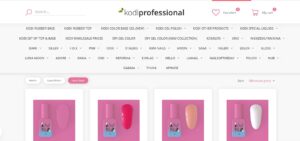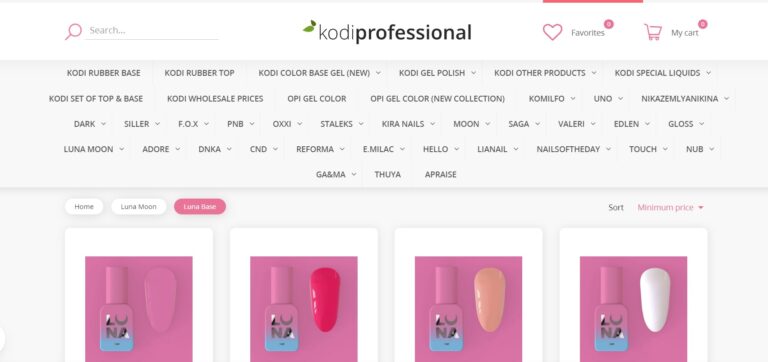Let us start by thinking about logos that didn’t make it to the big stage. What comes to the mind when questions about such logos are being asked? For those who cannot remember, there is no issue at all. Those who also wish to know how to design a logo? They should read more of this post.
There is a simple formula: Good logos stick around whereas bad logos usually end up getting changed. Good logos survive due to good logo design.
This is what makes logo design different from other kinds of branding materials. Web design banners, ads, and social media posts have their own goals in design. Yet none are as focused on being remembered for a long time, the way a good logo design is remembered for a long time.
Think about it: Ford, Shell, Toyota, Honda, Manchester United, Kellogg’s, Gillette, Nivea, NVidia, and EIDOS, their logos are all well known.
In all honesty, some of the best logos are also the least complicated ones. Let us think of Nike’s Swoosh, McDonald’s golden arches, Burger King’s wholesome logo, Ford with a blue oval and gray italic classy font, Royal Dutch Shell, Chevron, and vice versa.
Experts believe that flag designs should be simple, to the point that any child can easily draw them by recalling them from their memory.
This is true for logos as well. And those who are wondering how to make a good logo? They have come to the right place.
It should however be understood that the logo does not have to be necessarily the brand which is built separately. But it is the brand’s face. It will appear on the website, on the products, brochures, marketing activities, in-store signage, and the like, where people are interacting with the brand.
Regardless of the budget present, each business entity deserves a logo that makes them feel good about themselves. In this post, entrepreneurs and business owners will go through each step of the process to make a logo using good logo design from ground zero (ranging from selecting colors to hiring a designer).
Steps for creating a worthwhile logo
Here are some steps to develop worthwhile logos as compiled by logo design experts:
Starting with a good story
Organizations are made to earn money and that may not be poetic but it is worth starting with. To make a profitable business, businesses must sell themselves and their product (not in a bad way). Marketers today agree that buyers connect strongly to stories instead of most basic facts. Hence the logo must have a story in itself so the audience can understand.
How to create a logo that has a story in itself? Let us find out through Coca Cola’s example.
What is the story behind its logo? A brown carbonated soda with a lot of good flavor? The audience and the market see polar bears with thick white scripted letters. For Ford Motor Company, it’s not just the oval logo and cars, it’s the American sentiment and good old American precision of Michigan.
Company executives should actually look beyond what their company does and convey why they do it. It should be the foundation of their story. It should also come in the color and shape plus the typeface forming a logo.
Brainstorming for words best describing the brand
How to make a logo, with the story now present? it is time to take the logo draft from the story to the setting. They can search thesauruses for terms that best describe the products in the search bar.
Considering those who are in the apparel industry, can simply type in clothing and be surprised about the descriptive synonyms coming in. When they click the results to see new searches and go in deeper, entrepreneurs and business executives eventually reach the zone where they can relate to their proposed brand.
They should find at least five and at most 10 words that can describe what they do, why they do it, and how they do it. Each of these words should fit like pieces of a puzzle and help guide them to refining a concept nicely.
Creating ideas based on those words
Now that words have arrived for direction, the time for using a pencil & paper for sketching each idea coming to mind is here. Each new concept should be allowed to evolve on its own.
No one should feel frustrated if the first few ideas have faltered. They can be refined by using the previous sketches so that the results of new ideas can be better. The sketches can be focused on creating the shape, the brand’s name, and the like.
Here are some things to keep in mind:
- The shape should be kept simple. Those who can sketch even the most symbolic of components in seven seconds or less are doing good. They must avoid popular clip art or generic symbols as they are easily forgotten. The logo is something that the audience remembers the most.
- Colors should be chosen carefully. They can be both best friends and sworn enemies. Logo designers need to be mindful of color trends as they shouldn’t put in the whole rainbow.
The best sketches should be tested with the buyer’s persona
Once the sketches are on paper, it is time to select the concepts that are workable. No one should think too hard about this. They should consider the designs that keep catching the eye.
These drafts can be shared with friends, family, and trustworthy colleagues. If it is possible, they should bring the sketches to those who fit their buyer persona nicely. This can give them a real-time opinion on the artwork as it can indicate the way customers perceive their brand.
Entrepreneurs and logo designers should be ready for honest feedback and should not take any negative comments personally. They can use it to improve the logo. They can use feedback to choose one final concept and make it a worthwhile logo.
Refining the sketch that is chosen
Now the team is on their way towards making a worthwhile logo. Once the sketch to work with is identified, it is time to refine it and make the best story to begin with, as made in step one. To start refining the logo, designers should check the terms they identified in step two.
They should have a look at the sketch chosen and ask themselves which terms it is unable to capture and the like. They should be used to develop it further. They can even add back the traits they liked about the designs that were not chosen for final logo development.
Developing the logo’s layout on a free design platform
Now is the time to become technical and turn the sketch into something usable and formatted. To bring it to life, a lot of design platforms are available (and they are free). They can help recreate the sketched logo in digital format.
Appy Pie’s logo maker, DesignMantic, Looka, and Logo Crisp are among them.
The platforms above can help put the sketched logo in digital format but bringing that concept to life for a real-time audience requires technical direction. The layout should be right. Also, all text and shapes should have perfect spaces and the logo should be aligned with the surroundings.
The logo does not have to be symmetrical. Yet it must be aligned in various contexts. There are chances that business owners will face situations when the logo sits against various horizontal and vertical borders. It should appear in these surroundings regardless of how they might repurpose their logo and where they might publish it.
Choosing color options that have versatility
The logo’s color scheme can look great against the canvas’s color on which it was designed. Eventually, it will be placed on backgrounds whose colors were never even worked with.
Logo color variations for both light and dark backgrounds should be present. This can also mean having to just change the font’s color. In some instances, they might need to change the color of the whole logo.
Each option should be made to make sure the logo designers are ready when ordering promotional products that will display the logo.
Selecting the needed font
Now is the time to combine text with imagery. Those who have chosen a sketch primarily as a shape or symbol instead of text may start factoring in the written name of the company. The typeface this text will carry should be considered if the company’s name stands on its own without the logo.
The choice of font can say a lot about the business. A font that is either serif (having stems on each letter) or sans serif (without stems), also known as classic and modern serif fonts respectively. Generic fonts need to be avoided at all costs.
Ensuring Scalability
Logos are meant to represent the company on many platforms whether it’s print, the website, the social media platforms, on the internet, and vice versa. Businesses, brands, and companies alike prefer a logo that can be larger than billboards and can also be scaled down to be printed on small objects.
Each part of the logo should be visible and legible regardless of its size. All these worthwhile steps answer the question of how to make a logo.



















